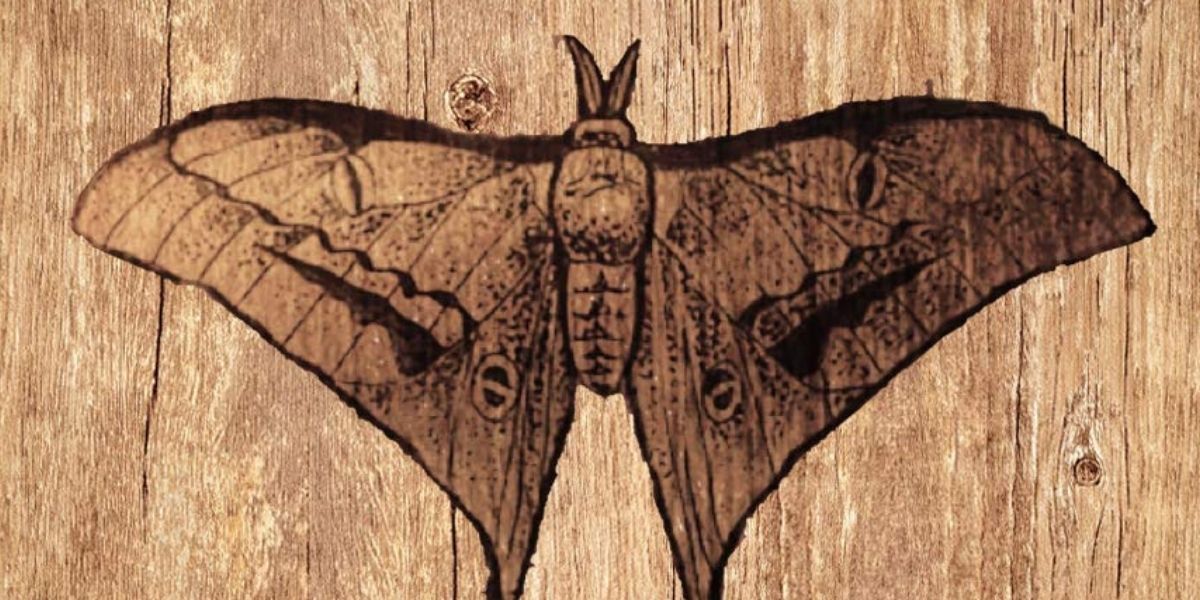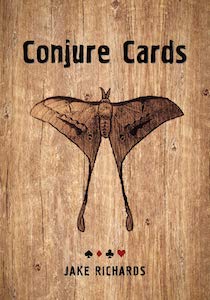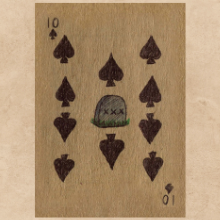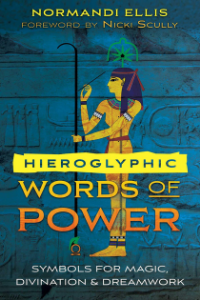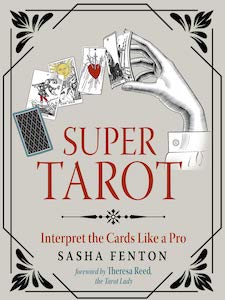
Super Tarot: Interpret the Cards Like a Pro, by Sasha Fenton
Hampton Roads Publishing, 164970197, 176 pages, February 2021
Sasha Fenton’s Super Tarot: Interpret the Cards Like a Pro is an instructive paperback that seems to be gaining popularity as I write this! It features a rather encouraging forward, written by Theresa “the Tarot Lady” Reed. There’s not much else to add about the forward, as it is only 2 ½ pages long, but it does complement the rest of the book nicely. I found myself excited to turn the page toward the book’s 1st chapter, even though I already comfortably involve tarot reading in my own personal practices!
Of course, we all can always learn more, and improve our skills for everything we do, but honing my own skills in tarot specifically is why I picked up Super Tarot, and boy, did Sasha Fenton deliver! Fenton, a professional astrologer, palmist, and tarot card reader since 1974, is also a well established instructive writer on divination, and Super Tarot adds another to the over 100 books in her already massive repertoire. I’m only focusing on one of her books for now, though, and that’s Super Tarot.
The very first (honestly refreshing might I add) thing I noticed about this book is the feeling of almost casual friendliness that shone through page after page. Fenton seems more like a friend giving advice than an author telling you what to do. I liked the overall positivity of finding several examples of what you should do as well, rather than seeing the negative counterpart of teaching what you shouldn’t. Don’t get me wrong, I understand and value the importance of warning beginners of the potential downsides one may face, but as someone with mental disabilities, having more than one different example helps me to better understand the abstract concepts I can struggle with.
Speaking of several examples of things to do, I learned an interesting spread from this book that I somehow hadn’t come across before. I know I’m no expert on tarot reading myself, but I had already gotten comfortable enough with the Past, Present, and Future spread to not really have many questions of how to advance it, but this book sure did give me an answer that turned out to be something I found Incredibly useful! I was nearly complacent in drawing just one card for each of the elements in the title of the Past, Present, and Future tarot reading, all totaling a count of three cards. From Super Tarot, on page 112, I found a spread that actually involves drawing two cards for each of the past, present, and future elements, totaling in a 6 card spread.
Right then, I put the book down for a few minutes, and picked up my tarot cards! The 6-card spread resulted in a far more accurate, and informative reading than I had ever gotten from pulling just 3 cards, and that might seem obvious, but remember, I was already comfortable with the amount of information I’d gotten with the way I was already doing the Past, Present, and Future spread, so to have even more to work with was amazing to me. I already feel more confident in my own reading abilities by just practicing one exercise from Super Tarot.
Simple as my own discovery may seem, Super Tarot is not geared towards beginners. Fenton forgoes the usual “what is,” and history chapters for only a few beginner tips, and a brief review of the Major Arcana, Minor Arcana, and card suits, before jumping right into her more advanced instructions on interpretation and skill building. If one would like to gain a more comprehensive beginning look at tarot from this author, Fenton herself directs the readers of Super Tarot to a different book of her works: “My book, Fortune Telling By Tarot Cards, is designed for beginners.”1
That doesn’t stop Fenton from continuing her reputation for writing in a clear style that’s easy to understand with Super Tarot, however. This book is filled with comprehensible, useful infographics that depict clear examples as well. While it’s not a new idea, there is still a bit of book mechanics information to note: In the suit’s description of Super Tarot, Fenton uses Pages, and Coins to describe the cards of those ranks. Respectively, other common names used to refer to those cards are Princes/Princesses, and Pentacles.
Overall, and as a person with disabilities that cause me to struggle with the abstract symbolism and emotional concepts that make up the very essence of tarot card reading, Super Tarot has helped me immeasurably. Author Sasha Fenton’s down to earth tone, and clear instructions with different examples to follow them from will stay with me, as I feel more confident than ever in my understanding of the interpretation of tarot card readings.
I enthusiastically recommend Super Tarot to any who might struggle with the same issues I do, or those who simply want to strengthen their grasp on tarot reading for any reason. You might even close the book with the inspiration to offer your own readings as a service for some extra cash! As for me though, the knowledge and confidence I’ve gained by reading this book, has allowed me the motivation to broaden, and personalize my personal tarot divination practice by creating my own unique card spreads. If you need me, I’ll be shuffling my cards!

Name’s Spencer. I use he/they. I’m just a queer disabled bookworm who’s been given a wonderful opportunity here! I love cats, nature, and spiritual stuff. Also, I’ve an unrivaled sweet tooth.

